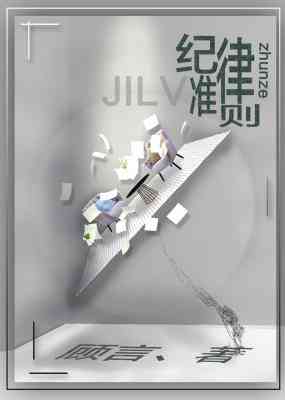Pet King
CH 1165
These archaeologists and local workers had worked together for a long time, and immediately, someone jumped into the pit with a special container.
They carefully loaded the freshly unearthed cat mummy into the container and brought it up for Hans to see.
Zhang Zian was surprised to see the cat mummy for the first time.
He even felt Richard’s claws sink slightly into his shoulder, which showed that he was deeply shocked.
The other elfins next to him were the same.
The body and limbs of the cat’s mummy were wrapped in a linen fabric, like a woven mat, with only the head exposed.
The whole body looked like a bowling pin.
It was difficult to distinguish a cat by only its exposed head because its face was blurry and one of its ears was even missing.
It was said to be a cat’s head, but it looked more like a pig’s head.
Only the painted outline could show a little of the cat’s shadow.
Hans was already used to looking at these kinds of things and waved his hand to have the mummy moved away and carefully kept.
“Surprised? The first time people see the mummy of a cat, they always have the same expression as you.
There are at least tens of thousands of mummies buried beneath the ruins of this temple,” Hans said and shrugged.
According to Hans, the underground tomb of Bastet’s Holy Temple had been first discovered by a local peasant in 1888.
About 19 tons of mummies were unearthed and piled up into a 60-meter-long and 21-meter-thick layer.
Cat mummies accounted for most of the mummies.
There were 80,000, which included mongoose, dog, and fox mummies.
The farmer sold most of the mummies and ground them up for fertilizer, and only a small portion was preserved and transported to the British Museum.
The pit Hans and the rest worked in was another, smaller underground tomb, and mummies were found only occasionally—relative to the figures of 80,000 and 19 tons.
In ancient Egypt, when a cat died, the owner would send the body of the cat to Bubastis as soon as possible, and the priests would make it into a mummy to be buried and dedicated to the goddess Bastet.
In order to keep cats from getting hungry in the underworld, mummies of mice and wooden fish-shaped toys were often buried with cats.
Over the years, numerous cat mummies had been buried around Bastet’s Temple.
“Do you think I’m here to look for murals and enchases? No, we are looking for these mummies, and it is the existence of these mummies that has contributed to the cooperation among the three countries,” Hans laughed.
Zhang Zian was still not able to understand completely and asked, “What is the use of these mummies? I mean, besides the use of cultural relics.”
These mummies could have some archaeological value, but for Wei Kang and the scientific research team, what was the use of mummies? After all, they were looking for live cats rather than dead ones.
The process of making a cat mummy was similar to that of making a human mummy: First, the cat’s body was dipped in a special saline solution to dissolve the grease and wash the skin and hair.
After 40 days of soaking, the body was taken out and dried.
Then, the body was preserved, filled with perfume ingredients in the abdominal cavity, and coated with vegetable glue to prevent the body from touching the air.
Finally, the body was wrapped in linen cloth.
The brain and internal organs would have already been removed before this and placed into funeral urns for eternal preservation.
It was precisely because the skin would be washed away during the treatment process that these cat mummies were not good-looking.
Because of this, it was impossible to judge the evolution of Egyptian cat fur color from the mummies.
So, what was the meaning of the mummies for the investigative team?
Hans smiled mysteriously.
“The answer is DNA.”
Zhang Zian seemed to understand a bit.
Egypt’s hot and dry climate, coupled with the special methods used by ancient Egyptians to make mummies, often kept corpses intact, and even after thousands of years, DNA could still be extracted from the mummies.
The “Nature” magazine had once published an article called “Paleogenetics of Cat Transmission in the Ancient World.” Scientists had studied cat migration by investigating DNA from more than 200 mummies or remains of cats.
The mummies and remains were from Europe, North Africa, East Africa, and Southwest Africa, spanning the middle of the Stone Age to the 20th century.
But considering such a long time span, the sample size was actually still a little small.
The real spirit of science was reasonable doubt and not blind obedience to authority, which was the reason for science being able to change with each passing day.
Hans was skeptical about the conclusion of the article, “Paleogenetics of Cat Transmission in the Ancient World.” They thought that the number of samples in this article was insufficient to support the corresponding conclusion.
Local Egyptian scholars also disagreed with the conclusion of the article because the article said that cats were first domesticated in the Fertile Crescent, not in ancient Egypt.
With an attitude of doing things themselves if they were not satisfied, Hans and the rest matched well with the Department of Biology at Cairo University on the same research, and through DNA research in mummies, they intended to find a more reasonable explanation for the domestication and migration of cats.
There was no tradition of humans using cats as food, so it was difficult to find the remains of cats in ancient human settlements.
This brought great difficulties to the research.
However, Egypt’s unique climate, geographical advantages, and ancient customs made it possible to preserve a large number of mummies of cats and their naturally formed corpses, which had become the source of Hans’ confidence.
They believed that the conclusion of the article would be overturned in time.
When Wei Kang contacted the Department of Archaeology at Cairo University, he was overjoyed to learn about the study, because the evolution of cats’ fur color could be found through DNA in the mummy.
The coat color of wild African desert cats was relatively fixed.
How had it evolved into hundreds of coat colors in domestic cats in later generations?
Even though science had flourished to the place where it was today, the genetic mechanism of cats’ fur color was not yet fully understood.
The genetic mechanism of cats’ coat color was very complex, and it was an abnormal species in mammals.
It was quite different from most other mammals.
For example, the calves of two black-and-white dairy cows must be black-and-white, but the location of the patches could be different.
But the offspring of the two reddish-brown cats might be a bunch of tortoiseshell kittens—not green, of course.
Two Siberian forest cats with keynote colors could also produce a litter of kittens that were not the same color as their parents.
Therefore, it was very difficult for breeders to breed new types of domestic cats.
It often took generations or even dozens of generations of lineage and condition stabilization to produce a new breed with a stable coat color gene.
Although Wei Kang was not a breeder, he knew this very well as an expert on cats, so he sent an invitation to cooperate to Hans and asked them to provide the corresponding DNA research report, wanting to discover the key events of the evolution of the primitive Egyptian cat from the mummy of the cats.
You'll Also Like
-

The Most Popular Comedian
Chapter 65 September 3, 2023 -

Red Envelope Group of the Three Realms
Chapter 1986 September 1, 2023 -

The Taste Of Apple Jam
Chapter 9 August 29, 2023 -

Using Gacha to Increase My Companions and to Create the Strongest Girls’ Army Corps
Chapter 84 August 28, 2023 -

Disciplinary Code
Chapter 65 September 4, 2023 -

The Cat Transformation
Chapter 27 August 26, 2023 -

Chemistry
Chapter 61 August 25, 2023 -

Active JK Idol Seems to be Interested in Me Who is a Free Person.
Chapter 32 August 25, 2023 -

The Top Efficiency Cultivator
Chapter 21 August 22, 2023 -

You’re Beautiful When You Smile
Chapter 225 August 18, 2023 -

I Am The Villainess With A Maxed-Out Luck Stat
Chapter 4 August 25, 2023 -

Dream Breaker
Chapter 33 August 8, 2023
